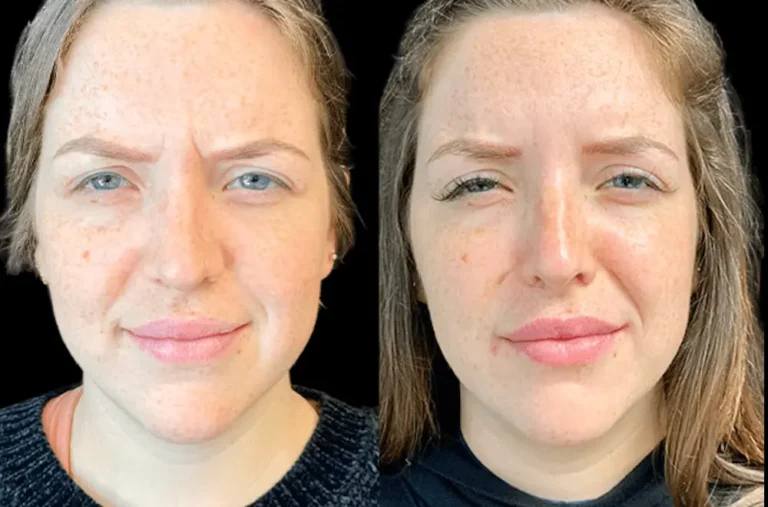Introduction to Social Media Influencer Marketing
Social media influencer marketing has become one of the most effective strategies for brands looking to connect with their target audience in an authentic and engaging way. Unlike traditional advertising, which relies on broad messaging to reach large groups, influencer marketing leverages trusted voices within specific niches to promote products and services. In today’s digital-first world, consumers are inundated with ads, making it increasingly difficult for brands to stand out. This is where influencer marketing shines—it taps into established relationships between influencers and their audiences to drive trust, awareness, and sales.
What Is Social Media Influencer Marketing?
At its core, social media influencer marketing involves partnering with individuals who have built a loyal following on platforms like Instagram, YouTube, TikTok, Facebook, LinkedIn, and Twitter. These influencers can range from celebrities with millions of followers to micro-influencers with a few thousand highly engaged fans. The idea is simple: influencers create content that promotes a brand’s products or services, often in a natural, story-driven, or lifestyle-oriented way that resonates with their audience.
The Evolution of Influencer Marketing
In the early days, influencer marketing was often equated with celebrity endorsements. Big brands paid movie stars or athletes to appear in commercials or print ads. But with the rise of social media, the concept evolved dramatically. Suddenly, anyone with a smartphone, a good content strategy, and a knack for storytelling could build a following and become an influencer. This democratization of influence has made influencer marketing accessible to brands of all sizes. Small businesses can now work with micro- and nano-influencers, who may have fewer followers but deliver extremely high engagement and trust.
Why Influencer Marketing Works
Influencer marketing is effective for several reasons. First, it leverages trust. Audiences follow influencers because they value their opinions and lifestyles. When an influencer authentically recommends a product, it feels like advice from a friend, not an ad. Second, influencer marketing allows for precise targeting. Brands can choose influencers whose followers match their ideal customer profiles. Third, influencer content often performs better than traditional ads, both in terms of engagement and conversion rates, because it’s typically more creative, personal, and integrated into the influencer’s normal content style.
Types of Social Media Influencers
There is no one-size-fits-all approach to choosing influencers. Here are some common categories:
Mega-influencers—usually celebrities or social media stars with over a million followers. They offer massive reach but often have lower engagement rates and higher costs.
Macro-influencers—typically have between 100,000 and 1 million followers. They’re well-known in their niches and provide broad reach with somewhat better engagement.
Micro-influencers—have between 10,000 and 100,000 followers. They often have highly engaged audiences and are seen as more relatable and authentic.
Nano-influencers—usually have under 10,000 followers. Despite their small audience, they often boast exceptional engagement rates and a very tight-knit, loyal community.
Choosing the right type depends on your goals, budget, and the nature of your target audience.
Key Social Media Platforms for Influencer Marketing
Influencer marketing isn’t limited to one platform. Each major social network offers unique advantages:
Instagram—still the most popular platform for influencer marketing, with its visual focus and features like Stories, Reels, and Shopping.
YouTube—ideal for long-form content, tutorials, unboxings, and reviews. Influencers on YouTube can develop deep trust with viewers.
TikTok—known for viral trends and high organic reach. TikTok influencers are great for reaching younger audiences and creating fun, creative content.
Facebook—still has strong reach, particularly for older demographics, and is useful for groups and event promotion.
LinkedIn—best for B2B influencer marketing. Thought leaders and industry experts can drive brand authority and generate leads.
Twitter—useful for thought leadership, conversations, and trending topics, although typically less visual.
How to Build a Social Media Influencer Marketing Strategy
An effective influencer marketing campaign requires thoughtful planning. Here’s a step-by-step approach:
-
Define Your Goals—Decide whether you want to increase brand awareness, generate leads, drive sales, grow social media followers, or improve brand perception.
-
Identify Your Audience—Clearly understand who you want to reach. Demographics, interests, buying habits, and pain points are critical.
-
Set a Budget—Budgets can range from paying for a single post to long-term ambassador programs. Be realistic about what you can afford.
-
Choose the Right Influencers—Look at audience fit, engagement rates, content quality, and past partnerships. Avoid being dazzled solely by follower counts.
-
Develop a Creative Brief—Outline key messages, desired content formats, and any required hashtags or CTAs, while still giving the influencer creative freedom.
-
Manage the Relationship—Build real partnerships. Don’t treat influencers like an ad channel; treat them as collaborators.
-
Track and Measure Performance—Define your KPIs. Common metrics include reach, engagement, clicks, conversions, and ROI.
Benefits of Social Media Influencer Marketing for Brands
Authenticity—Influencer recommendations feel personal and trustworthy.
Targeted Reach—Work with influencers whose audiences closely match your ideal customers.
High Engagement—Influencer content often receives more likes, shares, and comments than branded posts.
Cost Effectiveness—Micro- and nano-influencer campaigns can deliver great results at lower costs.
Improved Content—Influencers are skilled content creators who can produce high-quality, on-brand material.
SEO and PR Benefits—Influencer campaigns can drive traffic to your website and generate media buzz.
Common Challenges in Influencer Marketing
While powerful, influencer marketing isn’t without challenges.
Fake Followers—Some influencers inflate their follower counts. Brands need to vet partners carefully.
Brand Safety—Influencers’ personal opinions or actions can become controversial. Choose partners whose values align with yours.
ROI Measurement—Attributing sales directly to influencer campaigns can be tricky without proper tracking.
Creative Control—Brands must balance providing guidance with allowing influencers the freedom to speak in their authentic voice.
Niche Fit—Not every influencer is right for every brand. Poorly matched partnerships can fall flat or feel inauthentic.
Best Practices for Working with Influencers
Do Your Research—Look at audience demographics, engagement rates, and past partnerships.
Prioritize Authenticity—Choose influencers who genuinely like and use your product. Audiences can smell forced endorsements.
Be Transparent—Ensure compliance with disclosure regulations. Sponsored content should be clearly labeled.
Give Creative Freedom—Influencers know what works with their audience. Don’t micromanage every detail.
Build Long-Term Relationships—Ambassadorships deliver better results than one-off posts by developing consistent brand narratives.
Use Contracts—Clearly define deliverables, timelines, payment terms, and usage rights.
Influencer Marketing Trends to Watch
Rise of Nano- and Micro-influencers—Brands are increasingly favoring smaller influencers for their high engagement and niche focus.
Video Dominance—Short-form video (TikTok, Reels, Shorts) is the fastest-growing format.
Live Streaming—Influencers using live video for product demos, Q&A, and selling.
AI and Virtual Influencers—Computer-generated influencers with massive followings, like Lil Miquela, are becoming more common.
Performance-Based Contracts—More brands paying based on sales or leads rather than flat fees.
Integrated Campaigns—Influencer content used across multiple marketing channels, including ads, email, and in-store.
Measuring the Success of Influencer Marketing Campaigns
Measurement is essential for optimizing campaigns and justifying budgets. Common KPIs include:
Reach—How many people saw the content?
Engagement—Likes, comments, shares, saves.
Traffic—Clicks to website or landing page.
Conversions—Sales, sign-ups, downloads.
Brand Sentiment—Audience reactions and comments.
ROI—Revenue generated compared to campaign cost.
Brands often use affiliate links, discount codes, UTM tracking, and influencer-specific landing pages to attribute sales and leads.
Case Studies: Brands Winning with Influencer Marketing
Many brands have seen spectacular results through influencer marketing:
Glossier—Built its brand almost entirely through influencer and user-generated content, turning customers into evangelists.
Daniel Wellington—Famous for gifting watches to thousands of influencers, sparking a global fashion trend.
Gymshark—Worked with fitness influencers to become one of the biggest gymwear brands.
HelloFresh—Uses influencer discounts and meal unboxing videos to drive signups.
These successes show the power of matching the right message, product, and influencer to a target audience.
How to Choose the Right Influencers for Your Brand
When evaluating potential partners, consider:
Audience Fit—Do their followers match your target customers?
Engagement Rate—High engagement often signals real influence, not just reach.
Content Style—Is their aesthetic and voice aligned with your brand?
Brand Values—Do they share your company’s ethics and positioning?
Past Partnerships—Look at the quality and results of their previous campaigns.
Budget—Balance cost with potential impact.
Future of Social Media Influencer Marketing
As social media continues to evolve, so will influencer marketing. Brands will increasingly demand transparency, better metrics, and authentic partnerships. AI and machine learning will help identify the best influencer fits and predict ROI. Meanwhile, platforms will continue rolling out new features to support branded content, such as in-app shopping and advanced analytics. The line between influencer marketing, affiliate marketing, and advertising will blur, creating more opportunities for integrated, multi-channel campaigns.
Conclusion: Why Social Media Influencer Marketing Matters
In a crowded and noisy digital world, authenticity is priceless. Consumers trust people more than ads, making influencer marketing one of the most human and effective strategies in modern marketing. Whether you’re a scrappy startup or an established brand, there’s an influencer marketing approach that can work for you. By choosing the right partners, setting clear goals, and fostering genuine collaborations, brands can build lasting relationships with both influencers and their audiences—driving real, measurable business results.




